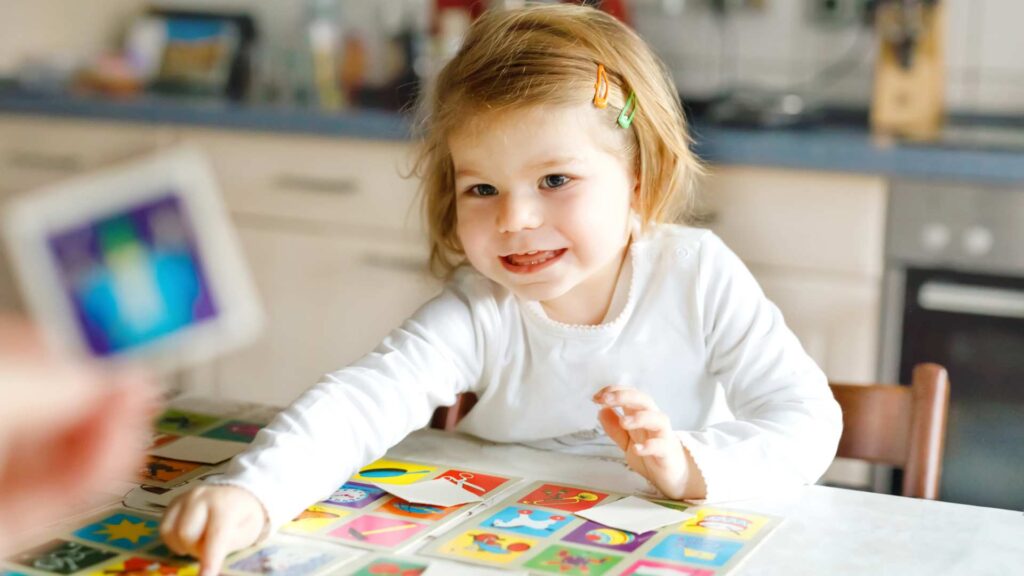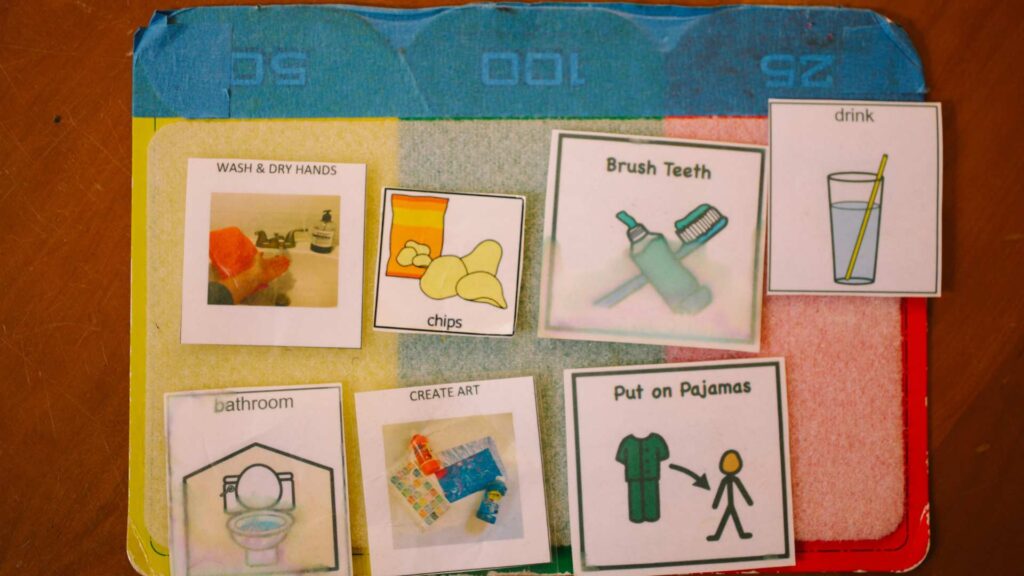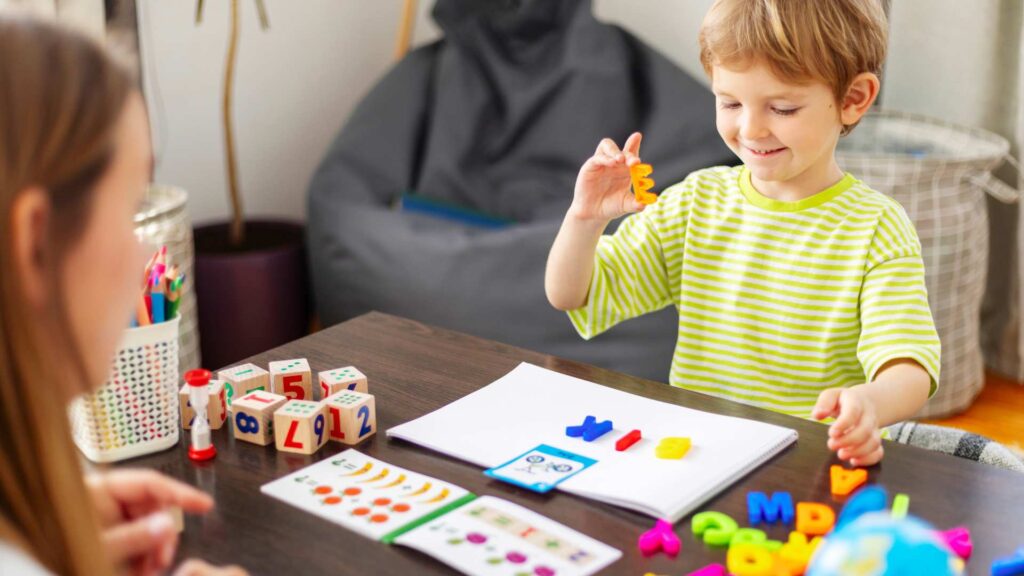Table of Contents
Why are visuals important for children with autism?
If you’re the parent or caregiver of a child with autism spectrum disorder (ASD), you’ve probably noticed how unique their learning needs and characteristics can be. Visual support for autism can make a world of difference in understanding and navigating their environment.
Visual supports are particularly effective because they tap into the strength many autistic individuals have: visual thinking. As Temple Grandin notes in her book Thinking in Pictures and Other Reports From My Life With Autism, “Spatial words such as over and under had no meaning for me until I had a visual image to fix them in my memory.” Visual tools help bridge the gap between abstract concepts and concrete understanding, empowering neurodiverse individuals to learn and communicate more effectively.
If you’re curious about how visual supports can become a powerful tool for teaching your child and enhancing family dynamics, keep reading. In this blog by ABA Centers of Pennsylvania, we’ll explore their benefits, practical applications, and how you can create visual supports tailored to your child’s needs.
What Exactly Are Visual Supports for Autism?
Visual supports are tools that use images, symbols, or text to aid understanding and communication. These supports can take many forms, such as:
- Picture cards for daily routines.
- Schedules to outline step-by-step tasks.
- Social stories to prepare for new experiences.
- Charts and diagrams for teaching new skills.
Visual aids present information in a way that’s easier for children with autism to process and retain.
The Benefits of Visual Supports

Just like when you went to school and learned new things through images, visual supports can be incredibly beneficial for individuals with autism. These aids not only serve as guides to help them know what to expect from a particular activity but also provide structure that enhances predictability. The advantages extend beyond just the children with autism; they also benefit their families and educators:
- Enhanced Communication: Visual aids can help children who are nonverbal or have limited verbal skills express their needs and understand others.
- Improved Learning: Visual supports help children grasp new concepts by breaking down information into more understandable pieces.
- Reduced Anxiety: Knowing what to expect through visual schedules or cues can provide a sense of security.
- Fostering Independence: Visual aids encourage children to complete tasks or follow routines on their own, promoting self-reliance.
- Better Family Dynamics: Clearly communicating expectations and routines reduces misunderstandings and creates a more harmonious home environment.
How to Create Visual Supports
Creating visual supports for children with autism doesn’t have to be complicated. By following these steps and incorporating practical examples, you can develop tools that cater to your child’s unique needs:
Understand the Purpose: Begin by identifying what you want to teach or communicate. Are you creating a schedule for morning routines, teaching your child how to tie their shoes, or helping them express feelings? Clear goals will guide the process.
Choose the Right Materials: You don’t need expensive supplies. Start with paper, markers, and glue, or explore free online resources for templates.
Simplify the Visuals: Use clear, simple images or symbols that your child can easily recognize. Avoid clutter and focus on visuals that directly relate to the task. You can use photos, drawings, or clipart.
Example: A “Stop” sign image to signal the end of an activity.
Pair with Text or Symbols: Adding short, descriptive text or universally understood symbols (like arrows or checkmarks) can reinforce understanding.
Use Technology: Technology can simplify the process of creating visual aids. Apps like Canva or Boardmaker allow you to design professional-quality visuals quickly. Additionally, websites like Teachers Pay Teachers offer ready-made resources that you can customize.
Involve Your Child: When possible, have your child participate in making their visual supports. This participation helps them feel more engaged and invested in using the tools. You can let your child choose colors or stickers for their visual reward chart.
Keep Them Accessible: Place visual supports where your child can easily see and interact with them; for instance, if it is a morning schedule, post them on the bathroom mirror or fridge. Laminate frequently used visuals for durability.
Test and Adapt: Not every visual support will work perfectly on the first try. Observe your child’s response and make changes as needed to ensure the tool meets their needs.
Explore more resources to create your own visual support for children with autism.
Situations Where Visual Supports Can Help

Visual supports are incredibly versatile; parents, educators, and therapists can use them in countless situations:
- Daily Routines: Morning and bedtime schedules can help children transition smoothly between activities.
- Behavior Management: Visual cues can remind children of expected behaviors or reinforce rules.
- Social Skills: Social stories can prepare them for situations like visiting a dentist, attending a birthday party, or riding public transportation.
- Classroom Learning: Charts, flashcards, and visual aids can make academic concepts more accessible.
- Coping with Changes: Visual aids can prepare children for changes in routine, like holidays or family trips.
The Role of ABA Therapy and Visual Supports
In ABA therapy sessions, therapists frequently incorporate visual supports as part of their evidence-based approach. They use these tools to help children develop skills, manage behaviors, and communicate effectively.
For example, therapists may use picture cards to teach a child how to follow multi-step instructions, such as washing hands.

Visual schedules during therapy sessions help children anticipate transitions and reduce anxiety.
Parents working with ABA therapists also learn how to implement visual supports at home, creating a seamless and consistent approach to their child’s development. This collaboration empowers families to support their child’s growth in practical, meaningful ways.
ABA Centers of Pennsylvania: Empowering Families Through Support
At ABA Centers of Pennsylvania, we understand the unique challenges and strengths of each child with autism. That’s why our approach to care is as individualized as the children and families we serve.
We integrate tools like visual supports into our therapy sessions to help children develop skills, gain independence, and navigate their environments with confidence. Beyond therapy, we educate parents on how to use these tools at home, fostering a supportive and cohesive family dynamic.
We aim to provide families in King of Prussia and Philadelphia with the resources they need to create meaningful growth and connection. Call us at (844) 444-7496 or schedule a free consultation here. Together, we’re not just teaching skills—we’re building brighter futures for children and families alike.








